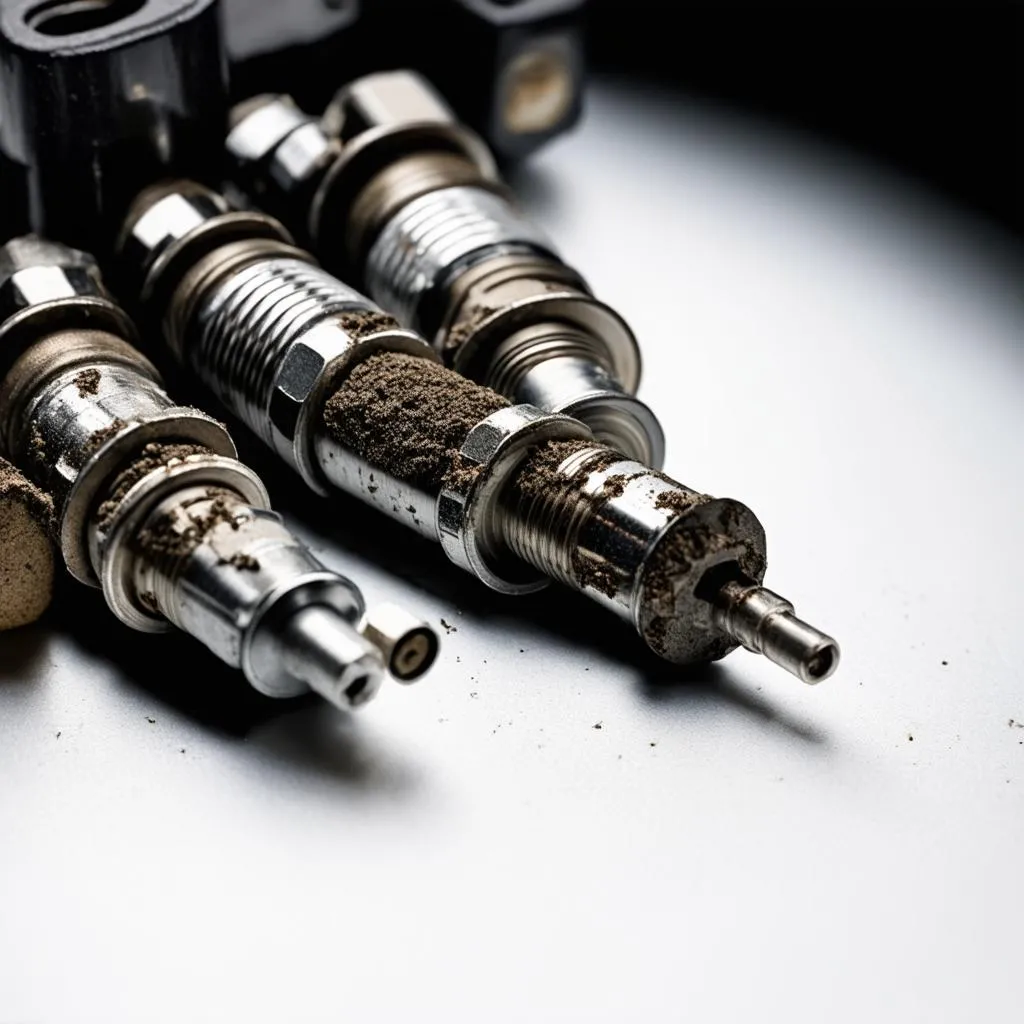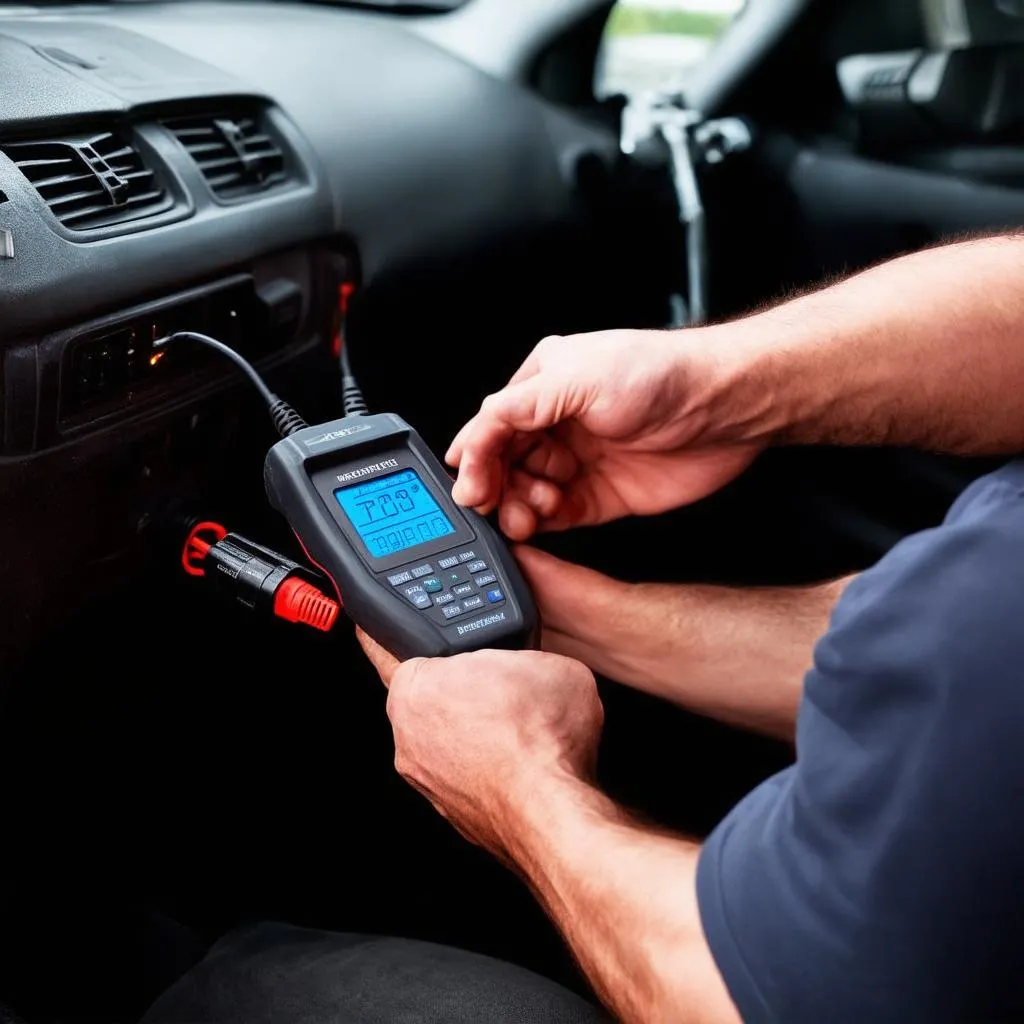“My check engine light just came on, and my car is acting up! I plugged in my OBD-II scanner and got a P0300 code. What does it even mean?!”
Sound familiar? Imagine this: you’re cruising down the highway, enjoying the scenery, when suddenly, that dreaded check engine light flashes on your dashboard. A quick scan reveals the cryptic code: P0300. Your heart sinks. What now?
Don’t panic! P0300 is a relatively common OBD-II code indicating a “random or multiple cylinder misfire.” In simpler terms, your engine isn’t firing properly on one or more cylinders.
Decoding the P0300 Code: What it Means for Your Car
Before we delve into the causes, let’s demystify this code. The “P” stands for powertrain, “03” indicates a misfire issue, and “00” signifies that it’s random or multiple cylinders. This code serves as a crucial warning sign, urging you to investigate the root cause before it escalates into a bigger, more expensive problem.
The Why Behind the Misfire: Unmasking the Culprits of P0300
Just like a detective piecing together clues, diagnosing the root cause of a P0300 code requires a systematic approach. Here are some of the usual suspects:
1. Faulty Spark Plugs or Wires: Worn-out spark plugs or damaged spark plug wires can disrupt the ignition process, leading to misfires.
2. Vacuum Leaks: Imagine a leak in a straw – it disrupts the flow, right? Similarly, vacuum leaks in the intake manifold or hoses can upset the air-fuel mixture, causing misfires.
3. Fuel System Problems: From a clogged fuel filter restricting fuel flow to a malfunctioning fuel injector delivering inconsistent fuel spray, any glitch in the fuel delivery system can trigger P0300.
4. Ignition System Malfunctions: A faulty ignition coil, crankshaft position sensor, or camshaft position sensor can disrupt the spark timing, leading to misfires.
5. Mechanical Issues: While less common, severe mechanical problems like low compression due to worn piston rings or a burnt valve can also contribute to misfires.
Addressing the P0300: From Diagnosis to Resolution
Dr. Thomas Miller, a renowned automotive engineer, states in his book “The Engine Whisperer”, “Addressing engine misfires promptly is crucial to prevent further damage and ensure optimal performance.” Here’s how to tackle the P0300 code:
-
Scan for Additional Codes: Often, the P0300 is accompanied by other codes, such as P0301 (Cylinder 1 misfire), P0302 (Cylinder 2 misfire), and so on. These additional codes pinpoint the specific cylinders experiencing issues.
-
Inspect the Spark Plugs and Wires: Start by visually inspecting the spark plugs for wear and tear, carbon buildup, or damage. Check the spark plug wires for cracks, burns, or loose connections.
-
Look for Vacuum Leaks: Use a carburetor cleaner or propane torch (with extreme caution!) around the intake manifold and vacuum hoses while the engine is running. A change in engine RPM indicates a leak.
-
Test the Fuel System: Check the fuel pressure, inspect the fuel filter, and consider having the fuel injectors professionally cleaned or tested.
-
Consult a Professional: If the diagnosis proves challenging or if you’re uncomfortable working on your car, seek help from a qualified mechanic.
Don’t Ignore the Warning Signs: The Importance of Prompt Action
Delaying repairs for a P0300 code can lead to more severe engine damage, decreased fuel economy, and even leave you stranded on the side of the road.
Related Questions and Answers:
Q: Can a bad catalytic converter cause a P0300 code?
A: While a severely clogged catalytic converter can cause misfire-like symptoms, it usually triggers other codes first. However, if left unaddressed, it can contribute to the P0300.
Q: Can I drive my car with a P0300 code?
A: It’s not advisable to drive your car for extended periods with a P0300 code as it can lead to more severe engine damage.
Explore More:
Need Expert Help?
Struggling with OBD codes or need help diagnosing car problems? Contact us on WhatsApp at +84767531508. Our team of auto repair experts is available 24/7 to assist you.
Remember: A stitch in time saves nine! Addressing the P0300 code promptly can save you from costly repairs and keep your car running smoothly.
 Worn Spark Plugs
Worn Spark Plugs
 Vacuum Leak Detection
Vacuum Leak Detection
 OBD Scanner
OBD Scanner